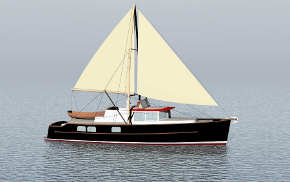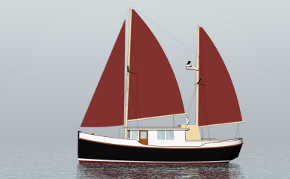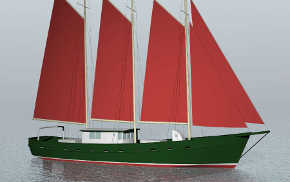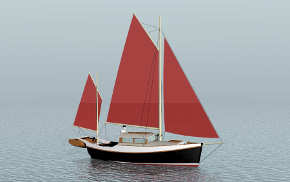Framing Wooden Hulls With UHMW-PE
Wooden boat building, like all construction methods, continues to evolve with availability of skills and materials.
But I have to come down against the wholesale replacement of bent oak ribs with UHMW-PE. As a semi-temporary sister frame repair in isolated cases, the use of UHMW-PE makes perfect sense. It’s easy to install and holds fasteners well, providing plenty of strength to hold the planking in place. I’ve used it myself to sister one frame in the tight bends of a double-ended fishboat stern.
I see a couple of problems with UHMW-PE. The first is not all UHMW-PE is created equal (kind of like wood), its mechanical properties vary with the resin used and the consolidation process. These variations will not be obvious to the eye. The tensile yield and ultimate strength of UHMW-PE is about half that of reasonably dry oak. This is probably not a huge issue as traditional wooden boats are overbuilt. The major issue I see is that UHMW-PE is roughly 1/8th to 1/10th as stiff (E modulus) as dry oak. This of course makes the UHMW-PE easy to use with light use of a heat gun, no steam required. Traditionally oak is steamed and bent to the sectional shape of a boat, as it cools the wood holds that shape really long term. UHMW-PE does not do this; it can be bent and re-bent. So the ribs of UHMW-PE are not going to hold the boat’s shape as well (lacking the stiffness) as steam bent oak.
A boat framed completely with UHMW-PE will need to rely (at least somewhat) on other structural members to maintain her shape. These would normally be the bilge stringer (or stringers), if any, clamp/shelf, and the planking itself. This changes the stresses on various hull parts. Probably the use of multiple bilge stringers (as advocated by Bill Garden among others) supported by a number of stiff bulkheads will adequately support the UHMW-PE ribs. That’s a slightly different solution than just substituting plastic for wood.
-
External Links
- Sorry, no links have been posted




